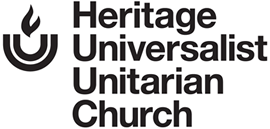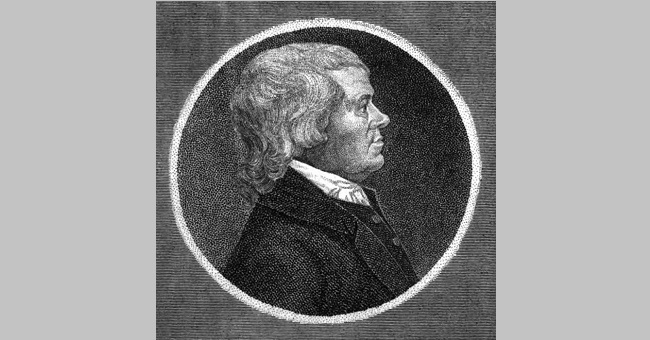by Mike Roberts, Church Historian
In 1776, revolution was swirling around the English colonies in America, especially in New England where the founding father of Universalism was now living. However, another revolution was sweeping him up in a way that had a more profound effect on him than the Spirit of ’76. John Murray had recently settled in the town of Gloucester, Massachusetts. The city rests northeast of Boston and was an important fishing center during the time of the American Revolution. Murray had developed a loyal following and preached his Universalist message to whomever would listen. Usually, these sermons were conducted in private homes, as he was barred from preaching in any of the town’s churches. Unsuccessful attempts had been made by his opponents to remove him from the city, labeling him as a dangerous malcontent.
A group of rebels who had been members of the First Church of Christ but who had begun to follow Murray decided to absent themselves from First Church services. The Sargent family was at the forefront of this rebellion. The rebels were forced to answer to church authorities as to why they no longer were committed to the ideals of the church. They answered these charges in a series of letters and also stopped paying taxes to the church. At this time in American history, local churches were partially supported by tax money. The assumption was that maintenance of order in the community could exist only through the support of a strong religious base. Christian religion, with its belief in punishment in the hereafter, was the strongest force to ensure moral behavior. Our Universalist rebels saw this taxation as an infringement on their natural rights and took the next step of constructing their own church building to hold their own services. They invited John Murray to be their first minister. Murray accepted but asked for no remuneration. The initial service in the simple structure containing thirty pews was conducted on December 25, 1780.
The First Church was quick to retaliate. Between 1780 and 1783, property of the dissident members was confiscated to account for their missed tax payments. One revolutionary was jailed for a short time. Murray tried to stay above the fray. He continued to preach regularly but continued to accept no payment for his services. After three years of harassment, the dissidents saw no recourse but to sue First Church and the parish. Murray reluctantly agreed to join the suit and it was led by the rebels, particularly the Sargent family. As Murray had anticipated, the case dragged on for three more years and during this period, broadsides, pamphlets, case filings and newspaper articles abounded on both sides.
The heart of the defense from First Parish was that the Universalist concept of salvation for all was a corrupting influence on the morals of the community. With the threat of eternal damnation removed from the life of its residents, there was no restraint on immoral behavior. In 1786, the courts agreed with the Universalist right to form their own church and not be required to pay taxes to the town’s major church. The landmark decision opened the doors of many dissident churches, not just the Universalists.
Meanwhile, Murray and his insurgents saw their ideas spread outside Gloucester to other cities, towns and villages in New England. Much like the early days of Christianity, sects with slightly different views and opinions were found in all these new locations. Conferences were called in the late 1780’s for the purpose of discussing the new faith. Murray typically stayed above these frays and preferred to simply preach the gospel. However, with no ordained ministers, no training schools and little but the writings and preaching of Murray and other Universalists, the new sect was at an embryonic stage.
It was also decided that the new churches required incorporation to protect themselves from continued lawsuits. This was done in Massachusetts and later in other states to which Universalism spread. Part of the agreement to incorporate included paying Murray a salary of 100 pounds per year. The newly incorporated church called itself “The Independent Christian Church in Gloucester”.
By 1788, Murray was well-respected among the membership as well as the political leadership of the new country. He could count among his friends, George and Martha Washington and John and Abigail Adams, who met Murray on board ship on a return trip from London where Murray had visited his aging mother. Nathaniel Greene, a Revolutionary War hero and declared Universalist, was a close friend. Benjamin Rush, a noted doctor, signer of the Declaration of Independence and avowed Universalist, stated that no one would have dreamed of the revolution in the religious world brought on by this unknown immigrant from England.
One more major event took place during this period. On October 6, 1788, Murray took as his wife, Mrs. Judith Sargent Stevens, a widow. Much could be said about this remarkable woman, but that will be saved for a later article dedicated solely to her singular accomplishments. In the meantime, we will let John Murray enjoy the fruits of his labor and the bliss of marital life before we finish his story.
Image: Rev. John Murray
Image from Dictionary of Unitarian & Universalist Biography.

